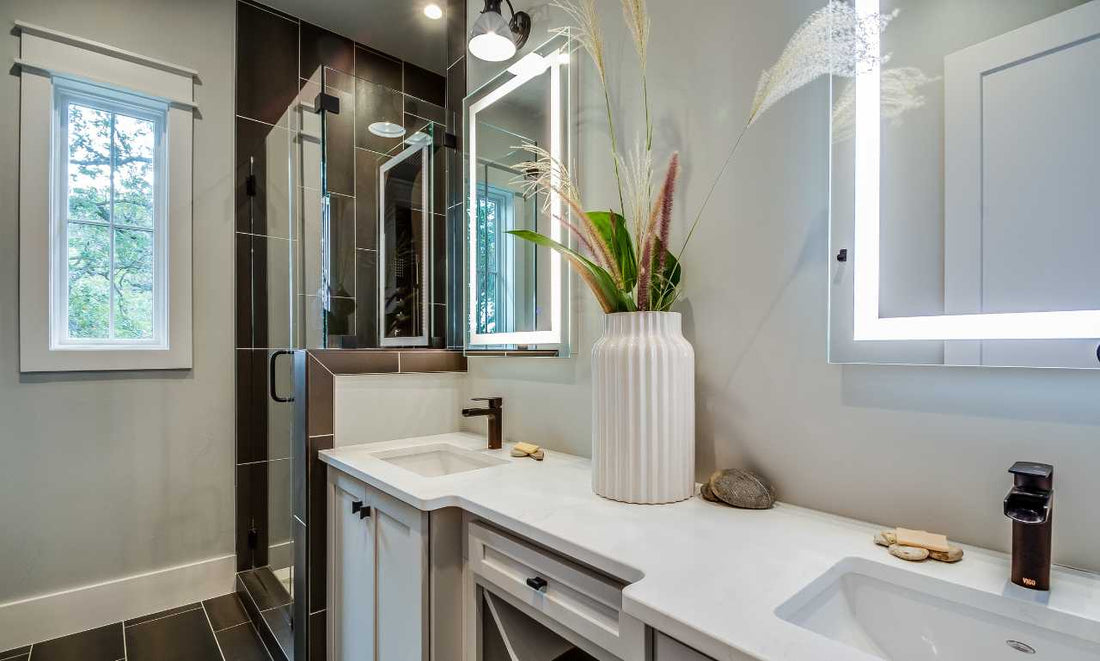Introduction
In the realm of home lighting and decor, the choice between LED mirrors and traditional lighting solutions is a significant one. Each option offers unique benefits and drawbacks, impacting functionality, energy efficiency, and aesthetic appeal. This article provides a comparative analysis of LED mirrors and traditional lighting solutions.
- Lighting Quality
LED Mirrors: Provide bright, even lighting that closely mimics natural light. Ideal for tasks requiring precision, such as makeup application or shaving.
Traditional Lighting: Can produce uneven lighting with shadows, depending on the placement and type of fixtures used.
- Energy Efficiency and Cost-Effectiveness
LED Mirrors: Highly energy-efficient, consuming less electricity than traditional bulbs. Long lifespan leads to fewer replacements and lower long-term costs.
Traditional Lighting: Less energy-efficient, with incandescent bulbs consuming more power and needing frequent replacements.
- Design and Aesthetic Appeal
LED Mirrors: Sleek and modern in design, LED mirrors add a contemporary touch to any space. Available in various styles and shapes.
Traditional Lighting: Offers a wide range of designs, from classic to modern, but requires additional space and fixtures.
- Installation and Maintenance
LED Mirrors: May require professional installation, especially for models that need hardwiring. Low maintenance is required due to the long lifespan of LEDs.
Traditional Lighting: Installation varies from simple (in the case of plug-in lamps) to complex (ceiling fixtures). Regular maintenance like bulb replacements is often needed.
- Safety and Durability
LED Mirrors: Generally safer as LEDs emit less heat. Most LED mirrors are designed with safety features for bathroom use.
Traditional Lighting: Can pose safety risks due to higher heat emission, especially in confined spaces.
- Space Utilization
LED Mirrors: Ideal for space-saving, as they combine a mirror with lighting. Suitable for small bathrooms and compact spaces.
Traditional Lighting: Requires additional space for fixtures, potentially cluttering smaller areas.
- Impact on Mood and Ambiance
LED Mirrors: Adjustable brightness and color temperature can influence mood and create a desired ambiance.
Traditional Lighting: Depending on the choice of shades and bulbs, can create a range of atmospheres, from warm and cozy to bright and energizing.
- Technological Features
LED Mirrors: Often come with advanced features such as touch controls, dimming capabilities, and anti-fog technology.
Traditional Lighting: Lacks the advanced technological features inherent to LED mirrors, though some modern fixtures offer dimming options.
- Suitability for Diverse Applications
LED Mirrors: Highly suitable for bathrooms, dressing areas, and spaces requiring accurate lighting.
Traditional Lighting: Versatile in application, can be used in any room, offering more options for general ambient lighting.
- Environmental Impact
LED Mirrors: More environmentally friendly, with reduced carbon footprint due to lower energy consumption.
Traditional Lighting: Less eco-friendly, particularly incandescent and halogen bulbs.
Conclusion
Both LED mirrors and traditional lighting solutions have their place in home design, each bringing distinct advantages. The choice between them depends on various factors, including energy efficiency, design preferences, space considerations, and specific lighting needs. While LED mirrors offer a modern, energy-efficient solution with additional features, traditional lighting provides versatility in design and application. Understanding these differences can help in making an informed decision that aligns with your home’s functionality and aesthetic requirements. For a variety of LED mirror options that combine efficiency with style, explore our website at ledmirrorworld.com.au, where you’ll find solutions tailored to contemporary living needs.

